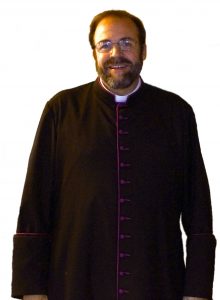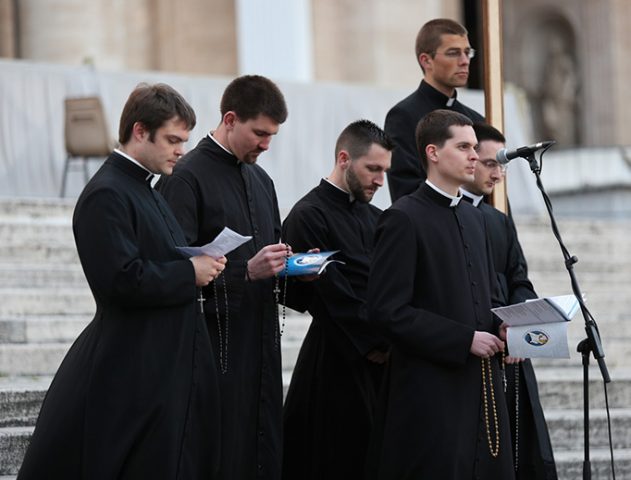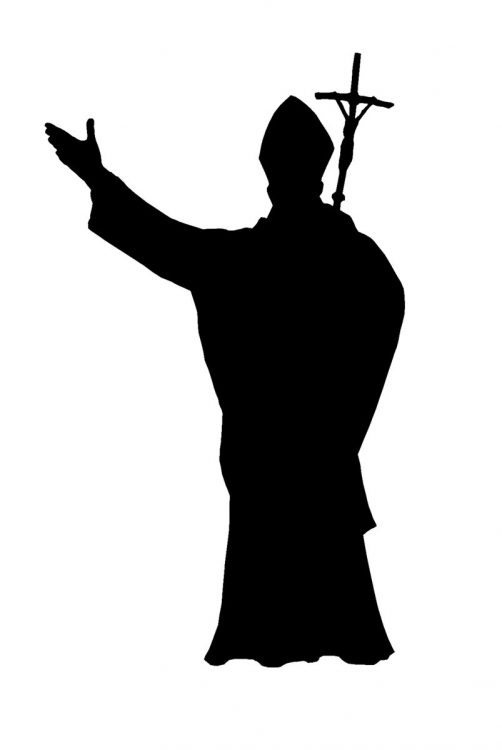The US fertility rate just hit a record-low — and it could signal a ‘demographic time bomb’
July 6, 2017Saint of the Day for July 7: Blessed Emmanuel Ruiz and Companions (1804 – 1860)
July 7, 2017
I love the cassock. It is practical, comfortable, defining, and a good memorare for both priest and layman.
By Msgr. Charles Pope, National Catholic Register, July 5, 2017
The cassock was once the most common form of clerical attire in the parish setting, but beginning in the late 1960s it was almost universally abandoned. Today, however, younger clergy have to some extent rediscovered it. It’s a bit like something relegated to the attic by one generation, only to be found much later on by their grandchildren, who bring it down like a treasure. “Wow!” the children remark, only to hear their grandparents respond incredulously, “What, that old thing?”
I was a little ahead of the curve in rediscovering the cassock. When I was a young priest, barely ordained, an older priest whom I trusted noticed that I esteemed the cassock and thought it both priestly and practical. He was amused at the “redemption” of what his generation thought a frumpy and inelegant robe and which they had cast off with a gleeful “Good riddance!” Although he did not rebuke my interest in it, and even encouraged me, he also explained why his peers had gladly ended the tradition. He said that in the days when he was in seminary, they were practically sown into their cassocks. Far from elegant, a cassock soon reeked of perspiration, was missing buttons, and was dotted with food stains. The seminarians were instructed to wear it even when playing basketball! They wore it to the shower, stepped out of it only immediately before entering, and then right back in while still rather wet, with only a fresh change of underwear. So the tale went.
“Ah,” I responded with understanding. “I, on the other hand have options and can enjoy the best of the cassock while avoiding some of the extremes that occur when it is imposed without limit.”
“Exactly,” he responded.
 I was glad for the clarification because as a young man I had grown increasingly angry at the previous generation, who had cast so much away with an iconoclastic fervor. At least I was able to come to some understanding, though not approval, based on the explanation of an older priest who was sympathetic to, rather than scornful of, my love of tradition.
I was glad for the clarification because as a young man I had grown increasingly angry at the previous generation, who had cast so much away with an iconoclastic fervor. At least I was able to come to some understanding, though not approval, based on the explanation of an older priest who was sympathetic to, rather than scornful of, my love of tradition.
Michal Lubowicki recently wrote a piece about the cassock, published on Aleteia.org. In it, he reflected on the reminders that are built into every cassock. For example, because of it, we must walk with care lest we stumble. He also noted that its easily rolled up sleeves mean that it is not a dress uniform but rather “work clothes.” Perhaps my favorite of his observations is that the cassock hides a multitude of imperfections. As Lubowicki puts it:
The Lord has clothed you in it to mercifully hide your inadequacies and deficiencies. Now that you know this, blessed are you if you behave accordingly (see John 13:17).
To me the cassock is both distinctive and eminently priestly. No one else wears anything like it, save students at graduation or the occasional judge. Thus, the cassock speaks to the ancient and set-apart quality of the priest. A priest’s attire should stand out rather than blend in. He is different—yes, “odd”—and represents something not only ancient but so new as to be eternal.
I suppose that the more common “business suit” worn by priests today can accomplish this quality of witness, but it is similar to the suit worn by any man working in an office, just in solid black and with an unusual collar. It has too many concessions to modernity. The color and collar say, “priest,” but to me the suit says, “office” and “function” more so than “vocation” and “configuration.” One of the stranger examples of this is shown by bishops who, when clad in their suits, go to the trouble of wearing their pectoral cross but then tuck it out of sight in their jacket pocket. How strange! It is almost a countersign, wearing the cross but then hiding it. Why bother to wear it at all? My point is that the suit speaks more to business world than to faith and vocation.
There are times when it is more practical to wear the clerical suit, and I do on those occasions; but as clothes help make the man, I feel more priestly when in the black robe of the cassock.
Even if there is not a specified habit for diocesan priests, the cassock comes close, and wearing one helps for the very reasons religious wear (or should wear) habits. So central is the habit to many religious, especially traditional sisters, that they are almost never out of it, except to bathe and sleep. There are 15 women in my parish convent, and I have never—not even once in the past ten years—seen a single one of them without the habit. There is something formative about this for them and for those of us who know them. I think the cassock can accomplish something similar for a priest.
People often thank me for wearing the cassock, but I have never had anyone thank me for wearing my suit. This tells me that the cassock means something special to God’s people.
There are also many practical things that make wearing the cassock a blessing:
-
It’s cooler. It surprises many people when I tell them that my cassock is cooler than the usual clerical business suit. Without providing too much information, suffice it to say that I don’t have to wear a full set of clothes under the cassock. In the summer, a modest pair of loose-fitting shorts with a comfortable elastic waist, a cotton t-shirt, and socks are sufficient. I also wear summer-weight cassocks, which don’t have slip liner of more formal ones. Believe it or not, it is very cool in the summer. This is so unlike the usual clerical business suit with its full-length trousers and its suit jacket—which almost always has the dreaded slippery polyester liner. It’s almost like wearing a plastic garbage bag over the shoulders and down the arms; the material doesn’t breathe much and it holds heat and humidity in against the body. No, thanks! If I can avoid it, I will. The cassock I wear is a light, breathable material, and is delightfully cool compared to the suit.
-
It’s loose-fitting. I have never been a fan of the rather tight-fitting clothes that are in style today. The cassock, when worn without the fascia (a wide, belt-like sash), hangs loosely on the body. I used to be young, tan, and trim; now I’m old, pale, and fat. The cassock hides a multitude of sins, unlike snug trousers or a belt, which constantly remind me of any weight I may have gained.
-
It has big pockets. Most cassocks have deep, wide pockets. They are almost like small saddlebags, and because the cassock hangs loosely, bulging pockets are not a problem. A lot of things can disappear in those pockets because they are wide and extend down so deeply, just past the knees.
-
You can throw it on and go. It doesn’t take much time to don the cassock. There’s no need to put on a dress shirt and trousers, don a belt, snap on a collar, and look for your clergy jacket. You just throw the cassock over your head, putting your arms through the wide arm holes, and then gravity does the rest. Because it hangs loosely, there’s no need for adjusting or tucking. There are buttons, but they are made of cloth and button and unbutton easily. The linen collar just sits in place; there’s no need for collar buttons. It’s simple, light, and quick. If I want to relax in my room for a bit, it’s just as quick to whip it off; the buttons pull open easily and I just step out of it. Simple!
Yes, there are times when the cassock is inconvenient. Any highly physical work involving lifting or carrying is better done without the cassock. Even when merely climbing stairs while carrying things in my arms, I have a tendency to step on the cassock and stumble. I have to be careful—but maybe that’s a good thing!
In the main, though, I love the cassock. It is practical, comfortable, defining, and a good memorare for both priest and layman. I highly recommend it to my brother priests. Be sure to get a couple of summer-weight ones, skip the liner, and wear it over light clothes; no need to wear cuffs or the fascia except for special occasions.
In the end, “suit yourself,” but I have come to love its ease and roominess as well as the simplicity of owning fewer clothes.
 I was glad for the clarification because as a young man I had grown increasingly angry at the previous generation, who had cast so much away with an iconoclastic fervor. At least I was able to come to some understanding, though not approval, based on the explanation of an older priest who was sympathetic to, rather than scornful of, my love of tradition.
I was glad for the clarification because as a young man I had grown increasingly angry at the previous generation, who had cast so much away with an iconoclastic fervor. At least I was able to come to some understanding, though not approval, based on the explanation of an older priest who was sympathetic to, rather than scornful of, my love of tradition.






